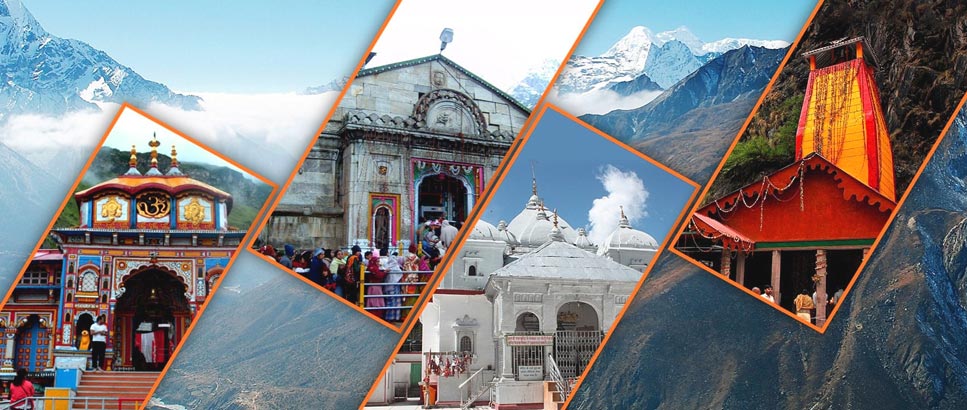
Nestled amidst the majestic Himalayas - the Char Dham Yatra in Uttarakhand is one of the most revered and spiritually significant pilgrimages in India. The term "Char Dham" refers to four sacred Hindu pilgrimage sites: Yamunotri, Gangotri, Kedarnath and Badrinath. Each of these sites is associated with a specific deity and holds deep religious, historical and cultural significance. Every year lakhs of devotees from across India and around the world undertake this sacred journey seeking spiritual purification and blessings.
1. Yamunotri: The Source of the Yamuna River
Located at an altitude of 3,293 meters in the Uttarkashi district, Yamunotri is the westernmost shrine of the Char Dham circuit and the source of the holy river Yamuna. The temple is dedicated to Goddess Yamuna was built in the 19th century by Maharaja Pratap Shah of Tehri Garhwal. According to Hindu mythology Yamuna is the daughter of the sun god Surya and sister of Yama the god of death.
The trek to Yamunotri begins from the town of Janki Chatti and stretches over 6 kilometres through scenic trails, gushing waterfalls and snow-covered peaks. A highlight of the pilgrimage is Surya Kund a hot spring where devotees cook rice and potatoes as a ritual offering to the goddess.
2. Gangotri: The Origin of the Sacred Ganga
Gangotri located at 3,100 meters above sea level, is the second stop of the Char Dham Yatra. This sacred town is the origin of the River Ganga which is known as Bhagirathi at its source. The Gangotri Temple built by the Gorkha commander Amar Singh Thapa in the 18th century is dedicated to Goddess Ganga. The actual source of the river is the Gaumukh Glacier located about 19 kilometres upstream from the temple and many trekkers and pilgrims venture to this glacial source.
Legend holds that the river descended from heaven to Earth through the efforts of King Bhagirath who performed intense penance to cleanse the souls of his ancestors. The journey to Gangotri is not only spiritually uplifting but also offers breath-taking views of snow-covered peaks and serene landscapes.
3. Kedarnath: The Abode of Lord Shiva
Situated at a staggering height of 3,583 meters Kedarnath is one of the most revered pilgrimage sites for devotees of Lord Shiva. It is believed to be one of the twelve Jyotirlingas where Shiva manifested as a pillar of divine light. According to legend the Pandavas came here to seek Shiva's forgiveness after the Kurukshetra war.
The Kedarnath Temple is believed to have been built by the Pandavas and later revived by Adi Shankaracharya stands as a symbol of faith and endurance. The temple is located near the Mandakini River surrounded by snow-clad peaks and a deeply spiritual atmosphere. Access to Kedarnath requires a 16-kilometer trek from Gaurikund although helicopter services are also available for those unable to make the journey on foot.
Kedarnath's resilience was notably seen during the 2013 flash floods when the temple survived despite massive destruction around it reinforcing the deep spiritual aura that surrounds this site.
4. Badrinath: The Sacred Shrine of Lord Vishnu
Badrinath, located at 3,133 meters in the Chamoli district is the final and most important stop of the Char Dham Yatra. Dedicated to Lord Vishnu, this temple is part of both the Char Dham of Uttarakhand and the larger Char Dham circuit of India (which includes Rameswaram, Dwarka and Puri).
The Badrinath Temple situated along the banks of the Alaknanda River is believed to have been established by Adi Shankaracharya in the 8th century. The idol of Lord Badrinarayan is made of black stone (Shaligram) and sits in a meditative pose. The temple remains open for only six months due to heavy snowfall in winter.
Nearby attractions include Tapt Kund a natural hot water spring and Mana Village the last Indian village before the Tibet border which is associated with the Mahabharata epic.
The Char Dham Yatra is not merely a physical journey through challenging terrains but a transformative spiritual experience that strengthens faith purifies the soul and brings devotees closer to the divine. Whether it’s the icy waters of the Yamuna the sacred Ganga, the presence of Lord Shiva at Kedarnath or Lord Vishnu in Badrinath, each site has its own unique energy and legend.
For those seeking peace salvation and a connection to something greater than themselves the Char Dham pilgrimage remains an enduring path to spiritual awakening amidst the tranquil Himalayas.